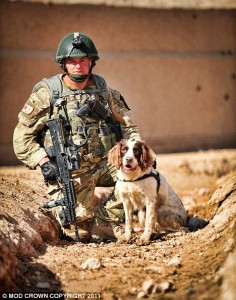Springer Spaniels, like most dogs with long hairy ears, are prone to ear problems. This is no reason to avoid the breed – regular grooming and care of the ears mean that your dog may never suffer. A springer spaniel ear problem usually becomes obvious by ‘smelly ears’ or by your dog’s rubbing at his ear with a paw – quite often both go together.
Inflammation of the ear is known as otitis. There are several causes and a range of treatments, but with the right care, most problems can be prevented.
Causes
There are four main reasons for irritation (otitis) within the ear.
1. Floppy ears trap moisture (and we know that springers love water).
2. Inherited skin allergies; rubbing by the dog causes release of exudates (‘thick fluids’) which make it worse. Typical allergens are food and pollen.
3. Thick hair in the ear canal traps moisture, dirt, grass, small twigs and earwax.
4. Mite infestation.
The first three reasons create ideal conditions for the growth of fungal (yeast) infections in the ear.
Diagnosis
Unless you are a very experienced pet owner, then it is essential that you take your pet to a veterinarian so that a proper diagnosis can be carried out. If left untreated, the problem could cause permanent deafness in your dog, besides the discomfort caused to your dog by a chronic infection.
Also of course, smelly ears is not pleasant in the home. Have you noticed how some homes just ‘smell of dog’?
Prevention
Springers love to swim, but if you can stop him swimming in stagnant water, that’s a good start – rivers and lakes with inflow or outflow are best as this keeps the water refreshed and prevents stagnation.
Regular grooming and inspection of the ear is essential to prevent problems developing. The hair around the edges of the ear should be trimmed carefully so that minimal ‘pickup’ of debris takes place. When your springer has been out for a run in the undergrowth, then check his years for small twigs and grass.
The hair inside the ear may also be trimmed; some may be removed with tweezers – find out more from a specialised article or book on springer spaniels, or ask your veterinarian to show you how to do it.
Treatments
The treatments your veterinarian suggests will be one or more of the following:
For allergies try different brands of food; antihistamines may be required if reaction is severe.
Flushing with a mildly acidic solution creates conditions where yeast does not grow. Your veterinarian should be able to recommend a suitable solution.
Antibiotics – usually in the form of drops. It is important that your veterinarian rotates the antibiotics, as long term treatment with one antibiotic can allow resistant strains of bacteria to develop.
In acute cases which resist those treatments, simple surgical procedures are available, with more radical surgery for deeper seated problems. Both of these procedures usually have good outcomes with greatly improved quality of life for the dog.
Mites are usually treated using a mite powder.
(c) 2010 Phil Marks
Source: http://www.submityourarticle.com
